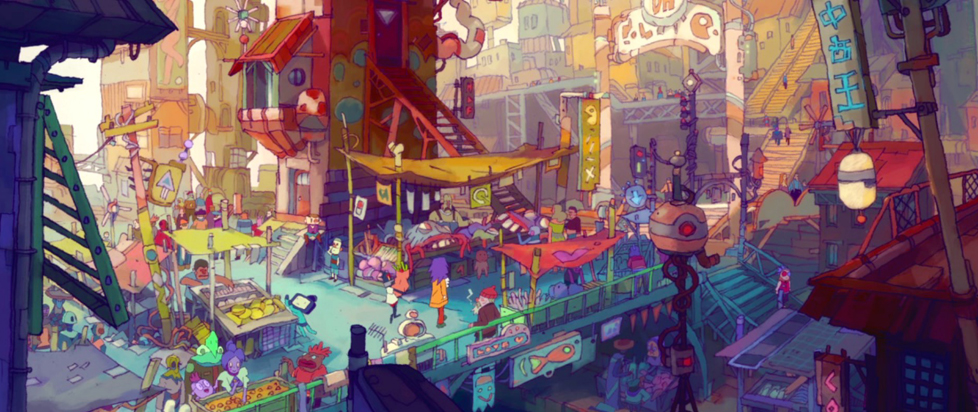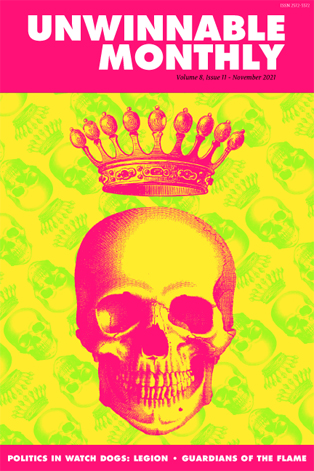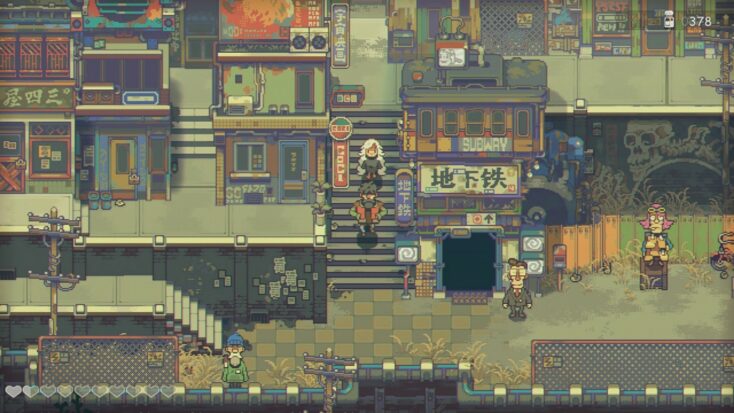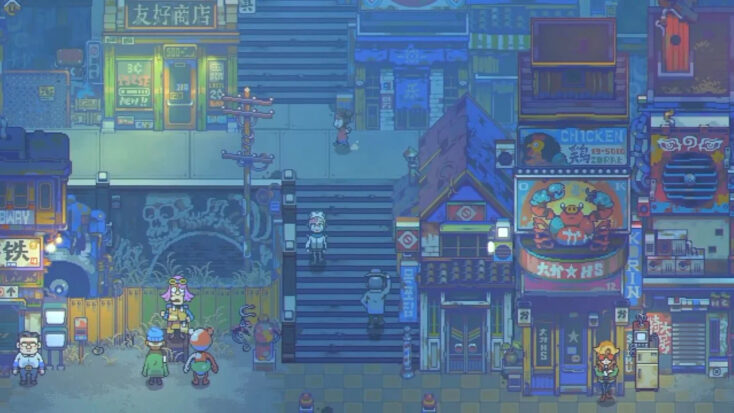
Rethinking the Post-Apocalypse in Eastward

This column is a reprint from Unwinnable Monthly #145. If you like what you see, grab the magazine for less than ten dollars, or subscribe and get all future magazines for half price.
———
Where videogames meet real life…
———
Pixpil’s new action RPG Eastward opens with an innocent scene where school children crowd around an arcade machine to play a Dragon Quest-esque game with one another. There’s no immediate indication they live underground in a post-apocalyptic slum of sorts, where an interesting mix of technology and agricultural adaptations make living possible in a place without sun. There is only a group of kids and their lighthearted banter as they pass the time before scampering along to go to school.
Shortly thereafter, players are introduced to John and Sam, the game’s pair of protagonists. John is a grizzled miner with a heart of gold and Sam is a headstrong child he’s taken under his care. Together, they embark on an adventure to overcome the Miasma, a noxious sludge that has engulfed the surface of the planet and driven civilization underground. It’s a tall order, but like any roleplaying game, you know that things will work out in the end (whether or not they work out the way you envision).
But first, John needs to help Sam enroll in school along with her peers by going on a fetch-quest to acquire the necessary documentation. In order to complete this mission, the ever-resourceful John dispatches blob-like enemies using his frying pan as a weapon. This is the same frying pan he’ll later use to cook Sam’s dinner.
In Eastward’s world all these actions – finding cooking utensils, buying food, enrolling in school, fighting for your life against slime – carries equal weight regarding how players progress through their journey. Combat and cooking are each essential for survival, and so are education and companionship. No task is treated as a distraction that slows the player from engaging with the other. Everything is an interconnected element of existence, and even fetch quests feel integral to making forward (or, rather, eastward) progress.
The simple understanding and acknowledgement that life goes on even after apocalypse-level catastrophe underpins much of Eastward’s charm and appeal. Sure, it’s a somewhat derivative title that has been constructed primarily from borrowed parts, most notably EarthBound and Zelda (particularly its two-dimensional iterations). John and Sam’s relationship, in many ways, can (and has been) compared to Sam and Ellie from The Last of Us; a bearded dude who’s seen some shit guides a girl who has also seen some shit through a world that has seen some shit.

Yet Eastward’s setting is not entirely a wasteland. People in this world have found ways to rebuild and (almost, maybe) thrive despite the odds. They’ve found they can cooperate toward common goals, figure out how to raise food, build an education system, sustain an economy and shelter citizens. There’s art and culture and entertainment. These people are not merely surviving. They are living the best they can.
Nothing is perfect in this world though, to be certain. There is political intimidation and corruption to confront. People’s social prejudices aren’t subtle. And there’s plenty of petty beef and bickering between townsfolk, like you’d expect to manifest when you have lots of people living in confined space. People are still people.
There are also shortages of necessities and the products of privileged late capitalist economics aren’t in abundance. There might not be anyone to help you in the event of a medical emergency either (though floating hearts you can gather from your surroundings have some miraculous restorative properties). This isn’t a place that offers the comfort and convenience of a modern middle-class life.
But at least it’s not an entirely murderous hellscape where might makes right in the absence of humanity either. In the process of tearing civilization down to the studs, rebuilding what matters most, and leaving the rest behind, maybe this world isn’t so grim after all. Separated from desires for incremental phone upgrades, one-click food delivery or streaming video services with more content than one can consume in a lifetime, maybe we shouldn’t be so quick to pity the plight of this place.

Indeed, everywhere you look in Eastward, there are signs of life. Sure, those signs are punctuated by environmental hazards, swaths of slime and death-defying boss battles. But even at its most dark and dour there are splashes of color, small signs of joy, reflections of a world that is doing what it can to exist in its present moment. And despite being told to fear the surface, that there is nothing left above ground, our protagonists refuse to be repressed. Instead, they push onward (or, rather, eastward) to find a path toward a better future not only for themselves, but civilization as a concept.
What John, Sam and the residents of Potcrock Isle have is a sense of purpose. The general setup of their story isn’t particularly unique, but what could have been a generic story about civilization rebuilding in the wake of cataclysmic events, lands a bit different when the aesthetic isn’t draped in shades of grey and brown, and people in the world do more than shoot guns and look impossibly ripped. Eastward treats its characters’ circumstances as a continuation of a story in progress and not just a look at what happens after everything we used to know collapses and gets wiped away.
The juxtaposition of seemingly impossible despair with the realization that life goes on is strangely comforting. It’s easy to think of post-apocalyptic stories as bleak investigations into what might happen after everything ends. But Eastward shows us that, sometimes, what looks like the end is just a continuation of a bigger story, one where there’s still a lot of living left to do. Even when things are at their most dire, the small things that make up our lives don’t stop happening. And nor does your ability to fight for a better tomorrow.
———
Ben Sailer is a writer based out of Fargo, ND, where he survives the cold with his wife and dog. His writing also regularly appears in New Noise Magazine.




